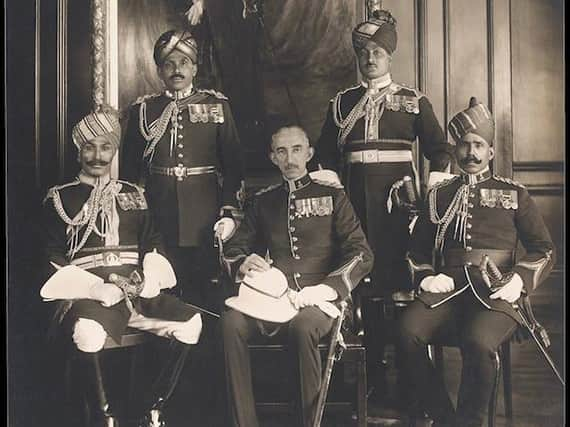Nostalgia: What soldiers did next after The Great War ended


The royal tour was to have a symbolic impact on our Heavy Woollen District. The visit cleared the way for large numbers of Indian and Pakistani migrant workers to come and work in the empty mills of Dewsbury, Batley, Heckmondwike and Huddersfield at a time when there was a severe labour shortage across the country.
But the origins behind such a large scale migration of Commonwealth workers can be traced back even before the Queen’s visit in 1961. In fact, these origins go back to the First World War and its aftermath.
Advertisement
Hide AdAdvertisement
Hide AdOur third Reporter series feature looks at the British-Indian Army’s role after the First World War had ended.
The British-Indian Army was still in France when a formal treaty was signed at the Palace of Versailles in June 1919, officially ending all hostilities.
The Great War was at last over and everyone breathed a sigh of relief. It was now time for the war-shattered nations of France and Belgium to be rebuilt after four years of bitter trench warfare.
Engineers from the British-Indian Army’s Technical Support Units immediately began work across the French countryside putting up fallen telegraph poles. Others were busy rebuilding bridges destroyed during the war.
Advertisement
Hide AdAdvertisement
Hide AdHuge numbers of Indian soldiers also worked as orderlies carrying injured men on stretchers or on horse-drawn carts to nearby coastal hospital-ships.
Those soldiers stationed in the Middle East had just as important responsibilities, especially after Jerusalem was recaptured by the British-Egyptian Expeditionary Force (BEF).
The commanding British General of this desert force, Edmund Allenby, was an educated, sensitive and intelligent man who had studied the different Middle Eastern cultures.
He made it clear only Muslim Sephoys from his BEF’s large British-Indian contingent were to guard all the sacred Islamic religious sites such as the Tomb at Hebron and the historic Dome of the Rock Mosque.
Advertisement
Hide AdAdvertisement
Hide AdAt the same time, British English-speaking soldiers with Jewish backgrounds were ordered to stand guard near the old wall of King Solomon’s ancient temple.
Besides guarding these holy sites, soldiers from the British-Indian Army served in a peacekeeping role throughout the Middle East.
Most of the men from the British-Indian Army eventually returned back to India by the early 1920s.
Some of the soldiers were demobilised. Yet, the majority of regiments remained on active duty patrolling the Sub-Continent’s vast rural landscape and tribal mountain areas. They had taken on the role of mounted army-policemen riding on horseback to keep law and order in the villages.
Advertisement
Hide AdAdvertisement
Hide AdThe British governing elite had meanwhile noted the huge “Indian” or “Asian contribution” during the Great War. The turbaned men had been able to take orders, and fight in combat as a modern mechanised army. They turned out to be fiercely loyal to the Crown.
The loyalty and discipline of these “Sephoys” astonished the establishment in London. The British-Indian Army had become a prized institution.
Soldiers of the British-Indian Army were seen as a valuable asset.
The governing elite at Whitehall now even began to look at them as a future peacetime workforce of loyal migrant British mill-workers.
Advertisement
Hide AdAdvertisement
Hide AdFor the men who had served in it (or were still serving soldiers), the British-Indian Army became an important part of their culture and heritage.
It was a source of immense pride for many Indians of that actual era to wear an army uniform. In fact, one of the highest honours for a soldier of the British-Indian Army was to be appointed as a King’s Orderly Officer in London - and to get regularly photographed by the newspapers.
The archive photo in this week’s feature shows a group of King’s Orderly Officers wearing their glittering beautiful ceremonial uniforms. The body language says everything.
The photograph clearly shows a strong sense of pride, always felt by men like those standing in this camera-shot. They were proud soldiers of the British-Indian Army.